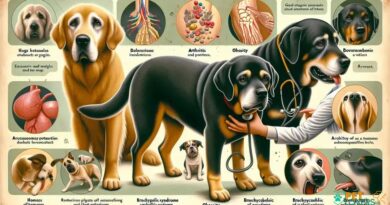O que é Manuseio
What is Handling?
Handling, in the context of dogs, refers to the way we interact with and manage our canine companions. It encompasses a variety of practices, from basic training techniques to more advanced methods of communication and care. Proper handling is crucial for establishing a strong bond between the dog and its owner, ensuring that both parties understand each other’s needs and behaviors.
The Importance of Proper Handling
Effective handling is essential for the well-being of dogs. It helps in building trust and confidence, which are fundamental for a healthy relationship. When a dog is handled correctly, it is less likely to exhibit behavioral issues such as aggression or anxiety. Moreover, proper handling techniques can significantly improve a dog’s responsiveness to commands, making training sessions more productive and enjoyable.
Basic Handling Techniques
Basic handling techniques include proper leash management, gentle grooming practices, and effective communication cues. Using a leash correctly not only ensures the safety of the dog but also allows for better control during walks. Grooming should be a positive experience, involving gentle brushing and handling of sensitive areas, which can help the dog become accustomed to being touched and handled by humans.
Advanced Handling Skills
Advanced handling skills may involve specialized training methods such as clicker training, agility handling, or even therapy dog handling. These skills require a deeper understanding of canine behavior and psychology. Handlers must be able to read their dog’s body language and respond appropriately to various situations, ensuring that the dog feels secure and understood.
Handling Different Breeds
Different dog breeds may require different handling techniques due to their unique temperaments and physical characteristics. For instance, a high-energy breed may need more vigorous exercise and playtime, while a more reserved breed might benefit from calm and gentle handling. Understanding the specific needs of each breed is crucial for effective handling and overall dog care.
Handling During Training
During training sessions, handling plays a vital role in reinforcing positive behaviors. Handlers must be consistent and patient, using rewards and praise to encourage desired actions. The way a handler interacts with the dog during training can significantly impact the dog’s learning process, making it essential to employ effective handling techniques that promote a positive learning environment.
Handling in Social Situations
Social handling involves how dogs interact with other dogs and people. Proper socialization is key to preventing behavioral issues and ensuring that dogs are comfortable in various environments. Handlers should introduce their dogs to new experiences gradually, using positive reinforcement to encourage calm and friendly interactions with others.
Health and Safety Considerations
Handling also includes health and safety considerations, such as recognizing signs of stress or discomfort in dogs. Handlers should be aware of their dog’s body language and be prepared to adjust their handling techniques accordingly. Regular veterinary check-ups and proper health care are also integral parts of responsible handling, ensuring that the dog remains healthy and happy.
Building a Strong Bond Through Handling
Ultimately, effective handling is about building a strong bond between the dog and its owner. This bond is fostered through consistent, positive interactions that promote trust and understanding. By investing time in learning proper handling techniques, dog owners can enhance their relationship with their pets, leading to a more fulfilling and harmonious life together.



